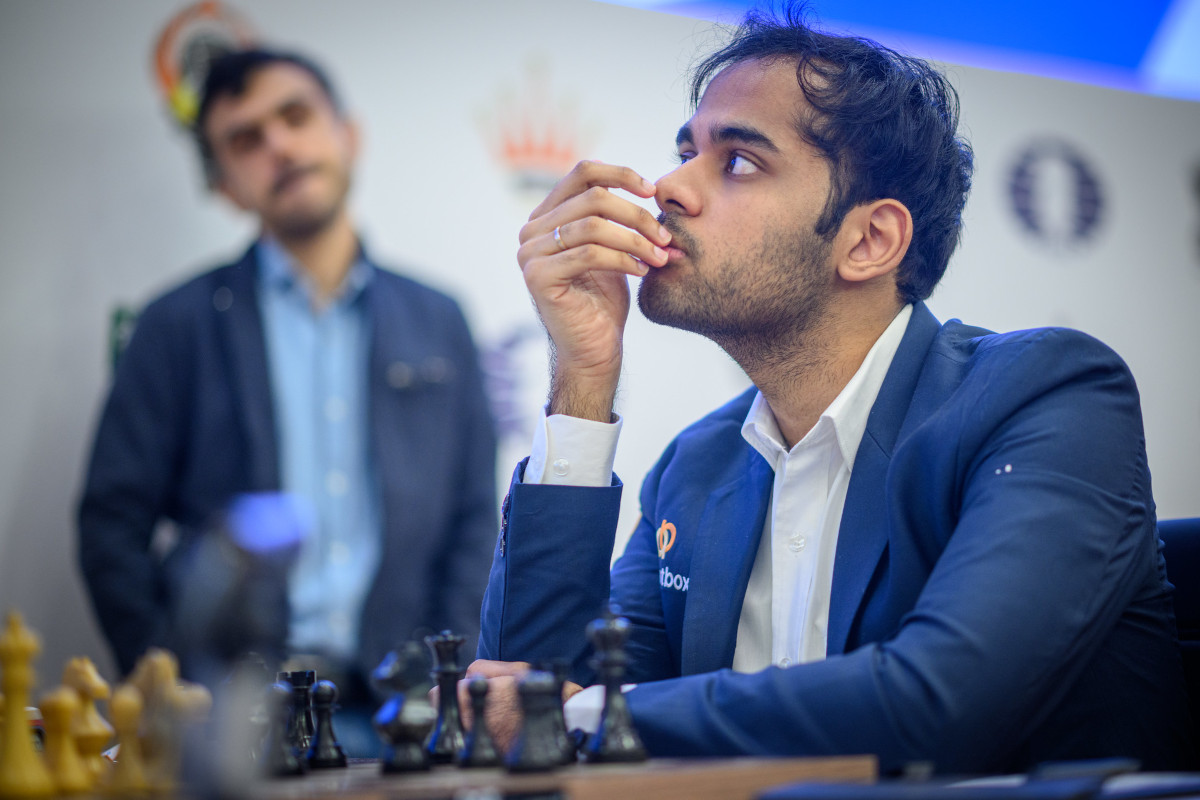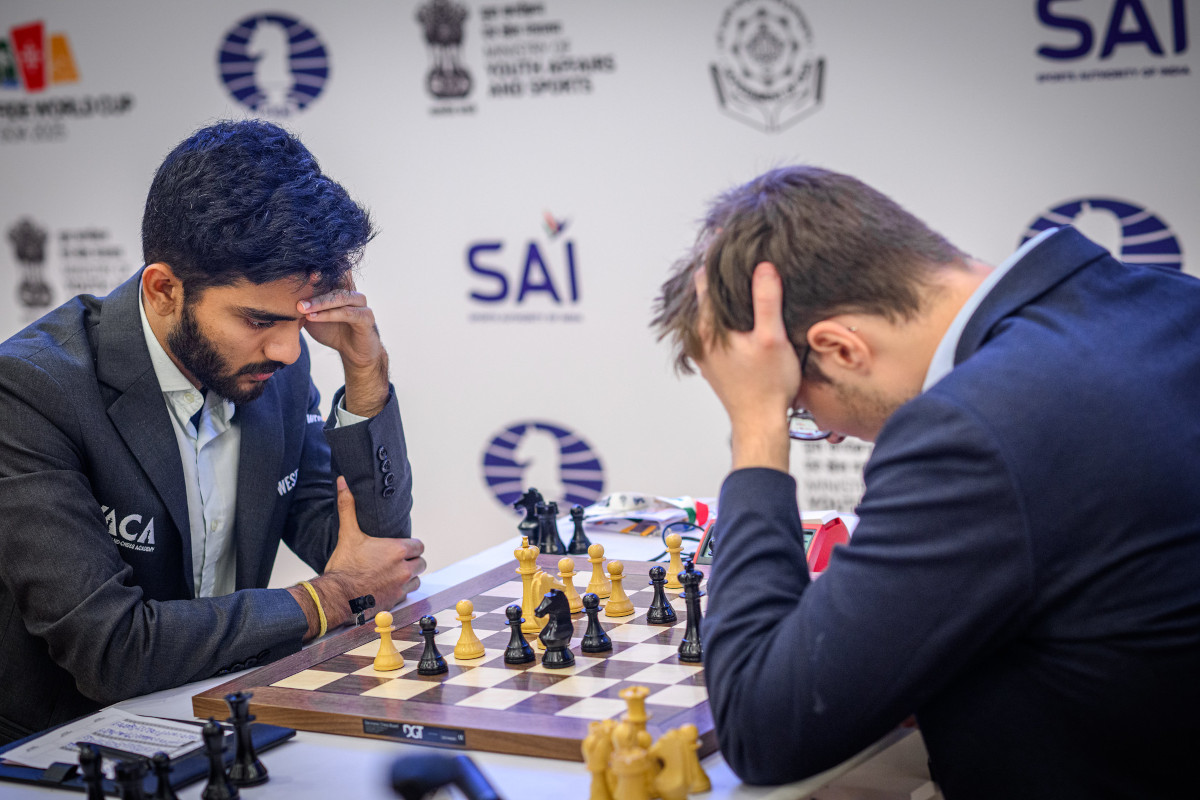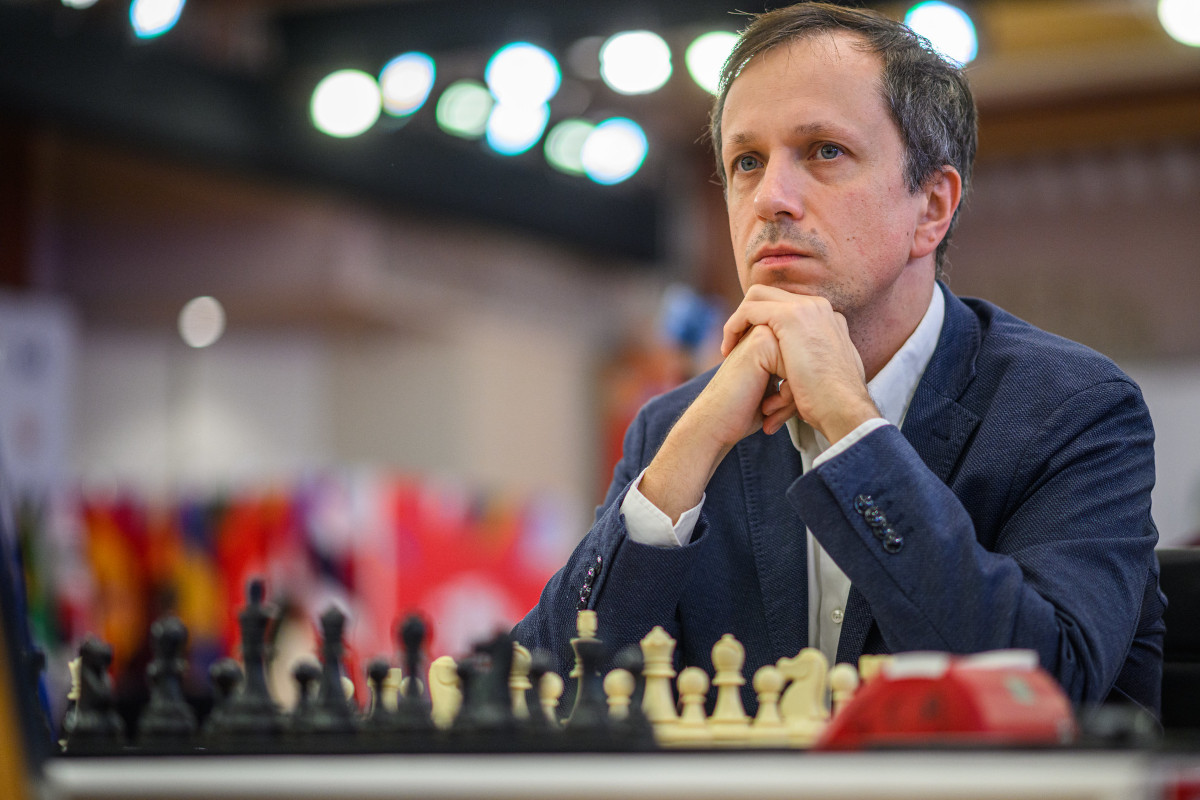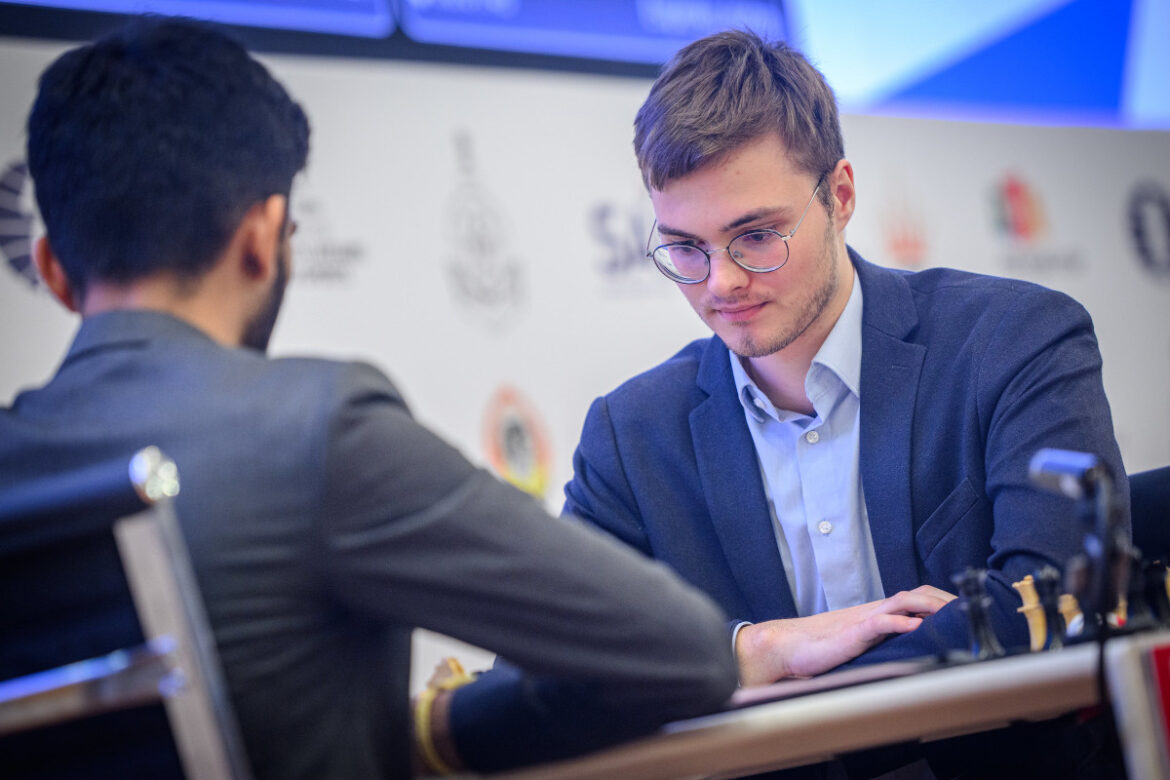A memorable day for German chess
Saturday’s action in Goa delivered one of the most dramatic days yet at the 2025 FIDE World Cup, as four players from the top ten in the starting rankings were eliminated from the competition. The second classical games of round three saw Gukesh Dommaraju (1st seed), Anish Giri (4th seed), Nodirbek Abdusattorov (8th seed) and Shakhriyar Mamedyarov (9th seed) all knocked out after losing their matches to lower-rated opponents.
The players celebrating these major victories were Frederik Svane (Germany, 2640), Alexander Donchenko (Germany, 2641), Jose Martinez (Mexico, 2644) and Nils Grandelius (Sweden, 2661), respectively.
In today’s fast-paced chess world, especially online, where blitz and rapid games dominate, the traditional approach of grinding through lines of opening theory can feel overwhelming, and even unnecessary. The real challenge? Striking the right balance in your opening preparation. How deep should you go? Where do you stop? This course is built on the timeless wisdom of my legendary coach, Chebanenko, who designed opening repertoires for his “lazy” students – not lazy in attitude, but smart in approach. His philosophy? Don’t memorise. Understand.
Among these results, Abdusattorov’s elimination was perhaps the most significant in terms of long-term impact, as it excludes the Uzbek grandmaster from the running for a place in the next Candidates Tournament. Already a regular member of the world’s elite, Abdusattorov had narrowly missed qualification in the previous cycle.

Jose Martinez obtained a 2-0 victory over Nodiberk Abdsuattorov, and is set to face either Alexey Sarana or Jorden van Foreest in round four | Photo: Michal Walusza
The other three stars have less at stake in the current qualification race. Reigning world champion Gukesh is, of course, already guaranteed a place in the next title match, while Anish Giri has qualified for the Candidates via the Grand Swiss. Shakhriyar Mamedyarov, now 40, has competed in three Candidates Tournaments (2011, 2014 and 2018) and no longer plays as frequently as in his peak years.
For Germany, Saturday marked a historic moment. Both Svane and Donchenko achieved their biggest wins to date, and with Vincent Keymer and Matthias Bluebaum also advancing, Germany will have four representatives in the round of 32. Now that Bluebaum is already qualified for the Candidates (via the Grand Swiss) and Keymer is firmly established among the world’s top ten, this has been a milestone year for German chess – and it could become even better should one of their players make a deep run in Goa.

Vincent Keymer | Photo: Michal Walusza
The four upset winners joined 17 other players who also progressed to round four on Saturday. Out of 32 games, 15 ended decisively, reflecting once again how the World Cup’s knockout format encourages sharp, fighting chess – especially in the early stages, when ambitious lower-rated players are more willing to take risks.
Among those advancing were India’s two highest remaining seeds, Arjun Erigaisi (2nd seed) and Praggnanandhaa Rameshbabu (3rd seed). Pragg impressed with an energetic win in a double-edged struggle against Armenia’s Robert Hovhannisyan, maintaining his status as one of the key favourites. With six of the top ten seeds already out of contention and Keymer already through, the only remaining top-ten player yet to secure qualification for round four is Wei Yi, who will face Benjamin Gledura in Sunday’s tiebreaker.
In this insightful video course, Grandmaster David Navara shares practical advice on when to calculate deeply in a position — and just as importantly, when not to.
Free sample video: Introduction
Free sample video: Invisible moves
Two additional notable results were recorded on Saturday. Lorenzo Lodici (Italy, 2572), who had eliminated Hans Niemann in the previous round, continued his fine run by defeating living legend Michael Adams. After surviving a difficult position in the first game, the Italian grandmaster converted the second to win the match 1½-½. Meanwhile, six-time Polish champion Radoslaw Wojtaszek produced the day’s shortest victory, defeating Vladimir Fedoseev in just 20 moves after the latter overreached in an aggressive opening setup.

Arjun Erigaisi | Photo: Michal Walusza
Gukesh and Giri falter in time trouble
The most shocking result of the day came after Gukesh faltered with 39.Re1?. The Indian star had less than 3 minutes on his clock, and failed to correctly assess that Black could force a simplification into a favourable knight endgame.
The only way to keep the balance was with 39.Rh1, while after the text move Black has 39…g3+ 40.Ke2 Re3+ 41.Kd1 Rxe1 42.Kxe1, trading the rooks.
Svane was in a dream situation, as he ran no risk and was able to patiently round up the queenside pawns and force his famed opponent’s resignation on move 55.

Gukesh Dommaraju and Frederik Svane battling it out in a technical knight endgame | Photo: Michal Walusza
Meanwhile, Giri had the black pieces and found himself on the defending side of a materially balanced position as the time control approached.
With 1 minute and 50 seconds on his clock, Giri erred by playing 36…Qd7, when 36…Ne3+, which forces a trade of minor pieces, was called for. Donchenko, also in deep time trouble, found the strong 37.f6, and after 37…Nxf6 38.Bxf6 Qe6 39.Ne4….
…it turned out that the white king can escape the successive checks of the black queen – 39…Qc4+ 40.Kg2 Qe2+ 41.Kh3 Qf1+ 42.Kg4 Qd1+ 43.Kf5 Qd7+ 44.Kf4
If one skill decides more games, it’s calculation. Openings fade, plans change – but seeing clearly, comparing lines, and choosing with confidence wins points. In this course GM Ganguly turns calculation into a trainable skill with a structured path for any level. You won’t just solve tactics; you’ll learn how to think: where to start, which branches to explore, when to stop, and how to keep a crystal-clear mental board under pressure.
Free video sample: Introduction
Free video sample: Forcing moves
There are no more useful checks (44…Qc7+ fails to 45.Be5), so White simply emerged a piece up. Resignation came three moves later.

Alexander Donchenko knocked out Anish Giri | Photo: Michal Walusza
Expert analyses by GM Karsten Müller
Praggnanandhaa 1-0 Hovhannisyan

Praggnanandhaa Rameshbabu facing Robert Hovhannisyan | Photo: Michal Walusza
Wojtaszek 1-0 Fedoseev

Opening expert Radoslaw Wojtaszek | Photo: Michal Walusza
All games – Round 3
Replay games from all rounds at Live.ChessBase.com
Williams Steinitz, 1st World Chess Champion (1886-1894) The match between William Steinitz and Johannes Zukertort in 1886 was the first chess match for the ‘World Chess Championship’. Steinitz won, and has since been considered the first official world champion in chess history.
Free video sample: The Steinitzian method of restriction
Free video sample: Strategy Introduction
